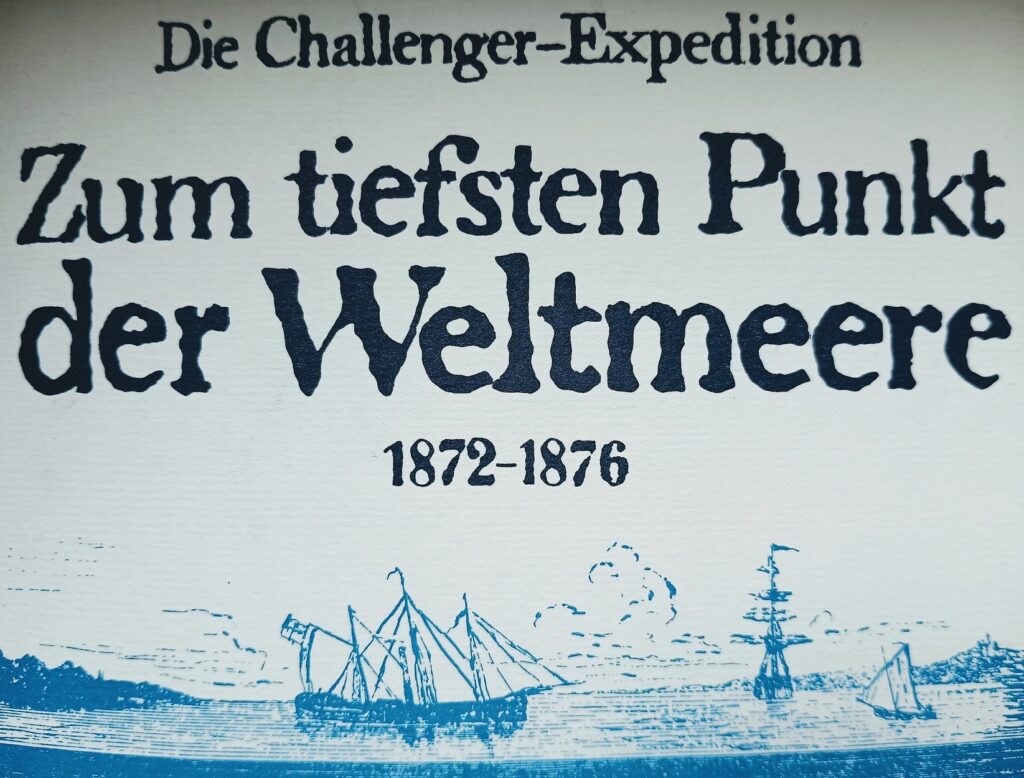Last month 150 years ago, on the 23rd of March 1875, the participants of the Challenger expedition plumbed out the deepest point of the Earth, which is now called the Challenger Deep in their honour. This expedition was different from previous endeavours, as scientific exploration was its primary objective, not just a useful side-quest to naval charting or conquering of new lands. Therefore, it is often considered the very first dedicated marine research expedition. This post was inspired by the book “Die Challenger Expedition – Zum tiefsten Punkt der Weltmeere” (engl: “The Challenger Expedition – to the deepest point of the world’s oceans”), which consists of letters, diary entries and reports written by Rudolf Willemoes-Suhm, a young German participant. I am not usually a reader of historical literature, but this one was fascinating. Through his description of familiar experiences doing research at sea, I was able to relate to the author, and I smirked at the similarities, only to be catapulted back into the reality of 150 years of cultural differences by his derogatory comments on indigenous peoples.
In 1872, during the early days of the expedition, he wrote in a letter to his mother:
“While we had barely been able to read, let alone do anything else, in the previous days, we have been fishing with the fine net since yesterday and examining some pretty things under the microscope […]. So, nothing has actually happened since our departure.”
Now compare this to my very own diary entry on my first research expedition on the Atlantic in 2018:
“To be honest, not much happened in the first few days. Up until Friday, I felt pretty bad, despite the medication, so I couldn’t do much. […] Later, we did a first seismic test run, which went well.”
So apparently, in almost 150 years of marine research expeditions, the weird mix between boredom, anticipation and struggles with seasickness in the first few days of transit is a timeless experience and I think it is not the only one.
Obviously, a lot has changed. Modern Research vessels today are often high-tech autonomous systems. Yet, traditional rope handling is used side by side with cranes and winches. The scientific equipment tells a similar story. Yes, there are autonomous underwater vehicles and sophisticated prototypes, but there is also a need for mechanical simplicity when multiple kilometres of steel rope are between the equipment and the operator. Dredging is one example of timeless simplicity, which is still used in marine geology today and has been done on the Challenger as well. Here, a net of heavy steel chains is dredged along the seafloor to catch hard rock samples.
Although some things have not changed, the main thing that has improved is safety. When I am in a storm on a modern research vessel, I am not immediately risking my life. When the waves crash against the hull and echo through the ship, I often think to myself “Imagine this would be a wooden sailing ship, sailing into the unknown horizon”, and I feel respect and awe for those before us.
Elisa Klein
